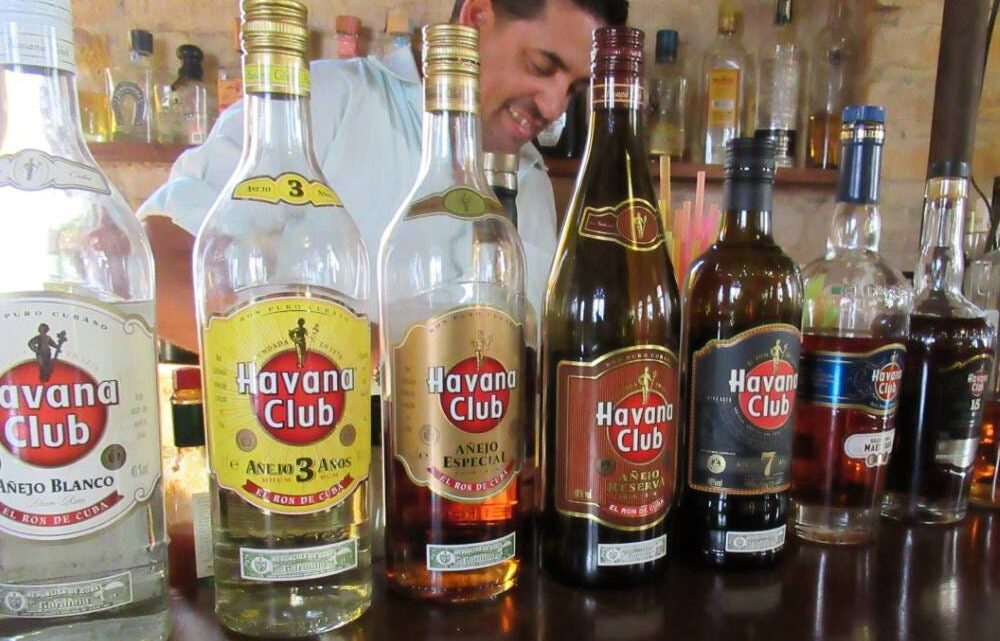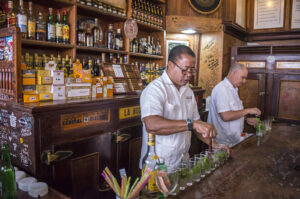Cuban Rum and its Denomination of Origin: A Legacy of Authenticity and Tradition

Cuban rum represents more than a drink; it is a reflection of the history and mastery of Cuba. My experience in the rum industry and my personal interest in this field have led me to delve into its world, and in this article, I will share detailed and accurate information about its denomination of origin and its place in Cuban culture and economy.
We will analyze how Cuban rum has evolved from its humble beginnings to become a world-renowned product. Learn about its production process, from growing sugarcane to aging in barrels, and how these methods have been perfected over the years.
The designation of origin of Cuban rum is not just a label; it is a guarantee of quality and authenticity, and we will see how this impacts its recognition and value internationally.
This article is an informative and direct tour to the heart of Cuban rum, highlighting its importance in the global distillate industry.
History of Rum in Cuba
Cuban rum, with its worldwide reputation, has deep roots in Cuban history. This section focuses on how rum production began on the island and its evolution over time.
The history of rum in Cuba begins in the 17th century, with the arrival of sugar cane to the island, brought by Spanish colonizers. Sugar production created a key byproduct: molasses, which became the basis for rum distillation.
Initially, this rum was a staple distillate, consumed mainly by slaves and plantation workers. It wasn’t until the 19th century that distillation and aging techniques began to be perfected, which significantly improved the quality of rum.
During the 20th century, Cuban rum began to gain international recognition. The introduction of modern distillation techniques and aging methods in oak barrels allowed the development of more complex and refined flavor profiles. These innovations were crucial to establishing Cuban rum’s reputation as a premium distillate.
In addition, the history of rum in Cuba is closely linked to key socio-political events. From Prohibition in the United States, which made Cuba a popular destination for beverage tourism, to the Cuban Revolution, which impacted the rum industry in various ways, these events have influenced the production and perception of Cuban rum both on and off the island.
Today, Cuban rum is synonymous with quality and tradition. Its evolution from a commodity to a refined and respected spirit illustrates not only the advances in distillate production, but also Cuba’s rich history and cultural resilience.
What is Designation of Origin?
Denomination of Origin (DOC) is a key term in the world of distillates, especially in the context of Cuban rum. This section provides a clear and concise explanation of what this designation implies and its importance.
The Designation of Origin is a certification that serves to protect the name of a product that comes from a specific region and whose quality or characteristics are due exclusively to the geographical environment, including natural and human factors. In the case of rum, the denomination of originensures that the product not only comes from a certain region, but has also been produced according to certain traditional standards and methods.
For Cuban rum, the denomination of origin guarantees that it has been produced in Cuba following the established methods and respecting the traditions that have given it worldwide fame. This includes the use of local ingredients, specific fermentation and distillation techniques, and aging practices.
The importance of the Designation of Origin goes beyond simple geolocation. It acts as a seal of quality and authenticity, differentiating Cuban rum from other rums in the global market. It allows consumers to identify and trust the authenticity of the rum they are buying, knowing that it meets the standards established by Cuba for its production.
The Denomination of Origin of Cuban rum is not just a label; it is a promise of quality, tradition and authenticity, crucial to maintaining the prestige and reputation of rum in the international market.
The Denomination of Origin of Cuban Rum: Characteristics and Regulations
The Denomination of Origin (DOC) of Cuban rum is based on a set of specific characteristics and regulations that guarantee its quality and authenticity. In this section, we will explain these key aspects that define the DOC of Cuban rum.
1. Raw Material: Only the use of local sugarcane and pure Cuban water is allowed for rum production. This ensures that the rum maintains its distinctive characteristics derived from the quality of Cuban sugarcane.
2. Geographical Location: The DO (Denomination of Origin) for Cuban rum stipulates that all production must take place in Cuba. This ensures that the climatic conditions and terrain, fundamental for sugarcane cultivation and the aging process, are consistent and contribute to the rum’s unique flavor profile.
3. Production Process and Human Factor: The DO meticulously regulates the production process of rum, including fermentation, distillation, and aging. These processes must follow traditional and proven methods to ensure the consistency and quality of the final product. A crucial element in this process is the “Saber Hacer” (know-how) of the Cuban Roneros (rum masters), the true artisans of rum. Their expertise in the aging and blending process, passed down from generation to generation, is essential to maintain the historical and genuine character of Cuban rum. This knowledge and art could be considered for recognition as Intangible Heritage by UNESCO, highlighting its cultural and traditional value.
4. Aging and Storage: Rum must be aged in barrels in Cuba for a specified minimum period. This is crucial, as the island’s climate plays an important role in the aging process, affecting the taste and quality of the rum.
5. Quality Control: DOC regulations include rigorous quality controls at all stages of production. This ensures that every bottle of Cuban rum bearing the DOC label meets the highest standards.
6. Authenticity and Labeling: the DOC protects the authenticity of Cuban rum, ensuring that any product labeled as such is genuinely produced in Cuba following all regulations. This is essential to preserve the reputation of Cuban rum in the global market.
Production Process
The production process of Cuban rum is a meticulous journey from sugar cane to the final drink. In this section, we will describe each stage of this process, highlighting how Cuban rum is created following strict traditions and quality standards.
1. Sugarcane cultivation: It all starts with the cultivation of sugarcane in fertile Cuban soils. Selecting high-quality sugarcane is crucial, as the taste and quality of rum is highly dependent on this raw material.
2. Molasses Extraction: Once harvested, sugarcane is processed to extract molasses, a thick, sweet liquid that is the main ingredient in rum production. The quality of the molasses directly influences the flavor profile of the rum.
3. Fermentation: The molasses is mixed with water and yeast, starting the fermentation process. During this process, the yeast converts sugars into alcohol. Fermentation time and conditions vary depending on the recipe and style of rum you want to produce.
4. Distillation: The fermented liquid is distilled, a process that concentrates the alcohol and refines the flavors. In Cuba, traditional stills are used that play a crucial role in defining the unique character of rum.
5. Aging: Rum is stored in oak barrels for aging. Cuba’s tropical climate accelerates this process, contributing to rum’s complexity and smoothness. Aging time varies, but even the youngest rums spend several years in barrels to develop their flavor.
6. Blending and Bottling: After aging, rums from different barrels and ages are carefully blended to achieve the desired flavor profile. Finally, the rum is filtered and bottled, ready to be enjoyed around the world.
Each stage of this process not only requires skill and knowledge, but also a dedication to maintaining the tradition and quality for which Cuban rum is known. From the field to the glass, Cuban rum is a testament to Cuba’s craftsmanship and pride.
Cuban Rum in the World: International Impact and Recognition
Cuban rum has established a strong presence and reputation in the international market. This section addresses its global impact and the recognition it has achieved over the years.
1. International Presence: Cuban rum is exported to numerous countries around the world. Its quality and distinctive flavor have made it a popular choice among rum aficionados and connoisseurs, as well as an essential ingredient in bars and restaurants.
2. Recognition in Competitions and Awards: Cuban rum has been awarded in various international competitions, winning prizes that highlight its exceptional quality and flavor profile. These accolades not only elevate the status of Cuban rum, but also validate its reputation in the global spirits community.
3. Influence on Cocktails: Cuban rum has played an important role in the evolution of cocktails. Classics such as the Mojito and Daiquiri, originally from Cuba, are known worldwide and have become synonymous with cocktail culture.
4. Cultural and Economic Impact: Beyond its role in the beverage industry, Cuban rum is an ambassador of Cuban culture. Its international success has also had a significant economic impact on Cuba, being one of the country’s main export products.
5. Adaptation and Resilience: Despite political and economic challenges, the Cuban rum industry has demonstrated remarkable adaptability and resilience. Its ability to maintain quality and tradition over the years is a testament to the strength and commitment of its producers.
Cuban rum is not only a renowned drink; it is a symbol of excellence and tradition that has left an indelible mark on the world of spirits and international culture.
Preserving Tradition: Challenges and Future of Cuban Rum
Cuban rum faces several challenges in maintaining its tradition and quality, while adapting to an ever-changing global market. This section addresses these challenges and contemplates the future of Cuban rum.
1. Maintenance of Quality and Tradition: One of the main challenges is to preserve the traditional techniques and practices that define Cuban rum, ensuring that modernization does not compromise its quality and authenticity. The preservation of ancestral methods is key to maintaining its reputation and appellation of origin.
2. Changes in the Global Market: The spirits market is constantly evolving, with emerging trends and a change in consumer preferences. Cuban rum must adapt to these trends, innovating while maintaining its unique identity.
3. Economic and Political Challenges: Economic and political restrictions, both internal and external, present significant challenges for the export and marketing of Cuban rum. Navigating these complexities is crucial to your continued success in the international marketplace.
4. Sustainability and Environment: Sustainability in rum production is becoming a growing concern. Industry must find ways to reduce its environmental impact, from sugarcane cultivation to the production and packaging process.
5. Future and Innovation: Looking ahead, the Cuban rum industry has the opportunity to explore new techniques and flavors, expanding its reach to new markets and demographics. Innovation, balanced with the preservation of tradition, will be key to its continued growth and relevance.
While Cuban rum faces challenges on several fronts, it also possesses significant opportunities for its development and expansion. The key is to balance preserving its rich heritage with the adaptations needed to thrive in an evolving global marketplace.
Conclusion
We have explored various aspects of Cuban rum, from its rich history and meticulous production process to its global impact and the challenges it faces.
DOC is crucial to maintaining and communicating the authenticity of Cuban rum. It ensures that each bottle produced under this denomination meets the highest quality standards, based on traditional practices and unique geographical characteristics.
This certification not only protects the heritage and prestige of Cuban rum, but also ensures that consumers around the world enjoy a genuine, high-quality product.
Looking to the future, the DOC will be a fundamental pillar in the preservation of the identity of Cuban rum. Despite the challenges and the need to adapt to an ever-changing market, the DOC offers a framework to maintain the integrity and authenticity of Cuban rum.
I deeply appreciate the collaboration and participation in the correction of this article by Osnier Soñora Almaguer, Brand Ambassador of Ron Legendario.
Please do not hesitate to contact me to send me your comments or suggestions in order to improve this information.
Sources
- .History of Rum in Cuba:
- Denomination of Origin of Cuban Rum:
- Cuban Rum Production Process:
- Impact and International Recognition of Cuban Rum:
- Challenges and Future of Cuban Rum:
Featured image: Rum Wonk
About The Author
Camilo is an audiovisual communicator with over 15 years of experience. He resides in Caracas, Venezuela, and has studied film and television, acquiring skills in writing film scripts. He currently works as a Digital Content Manager at TRL. If you would like to see his portfolio, you can visit his website at http://ccesarino.com.














